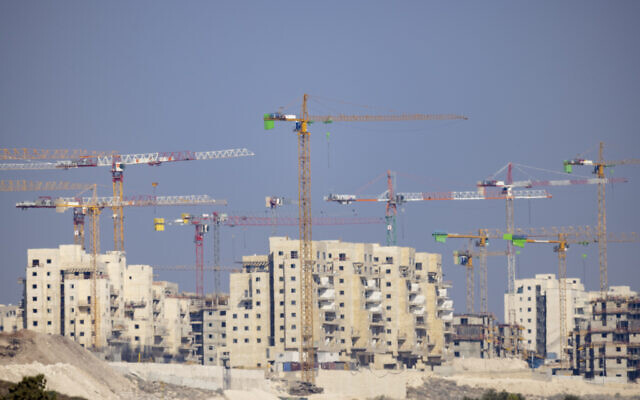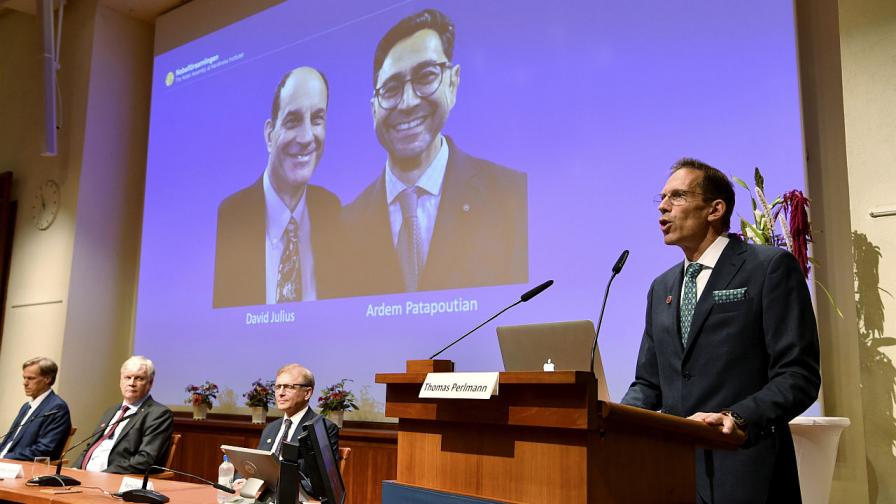It’s Saturday night on Rothschild Boulevard in Tel Aviv and a group of protesters is again gearing up for a rally against Israel’s soaring housing costs, as activist Daphni Leef prepares to address the crowd.
But the year is 2021, and unlike 10 years ago when Leef and her fellow activists led a protest movement that brought hundreds of thousands of Israelis into the streets across the country, the crowd this past Saturday numbered barely several dozen — and Israel’s housing prices are nearly double what they were in 2011.
When Leef famously pitched a tent on Rothschild Boulevard one day in July 2011 to protest rising housing expenses, the average price for a four-room (three-bedroom) family apartment in Israel stood at approximately NIS 1,450,000 ($450,000 per the current dollar-shekel rates, and about $402,777 in late 2011 when the average rate was 3.6) — and was considered high at the time. Between 2008 when the global financial crisis broke and late 2010, housing prices in Israel had shot up at least 35%, according to a Bank of Israel study titled “Has a bubble developed in housing prices?” (Spoiler: BOI did not find a housing bubble.)
By 2013, housing prices had increased by at least 55% from 2008, and rent had risen by 30% on average, according to a 2015 State Comptroller report slamming government inaction and poor planning from the tail end of Ehud Olmert’s tenure as prime minister through Benjamin Netanyahu’s fifth year in office at the time.
Throughout the 2010s, housing prices in Israel kept climbing steadily, halting briefly in 2020 when the COVID-19 pandemic hit, but rising again in 2021. According to the Central Bureau of Statistics, prices for new homes in Israel went up 12.5% so far this year alone, compared to the same period last year. (This is also due in part to a worldwide increase in the cost of materials.)
Get The Times of Israel’s Daily Editionby email and never miss our top stories
By signing up, you agree to the terms
By June 2021, the average cost of a four-room apartment in Israel was roughly NIS 2,200,000 ($682,608), according to quarterly and annual research by the Alrov Institute for Real Estate Research at Tel Aviv University’s Coller School of Management. The institute studies average four-room apartment prices in 12 cities in Israel, calculating affordability gaps and loan-to-value (LTV) ratios (a calculation in mortgage lending to determine the amount required to put in a down payment). The cities include Bat Yam, Rehovot, Ramat Gan, Petah Tikva, Rishon Lezion, Haifa, and Beersheba, as well as Tel Aviv and Jerusalem.
Israelis protest on Rothschild Boulevard in Tel Aviv against soaring housing prices on October 2, 2021. (Avshalom Sassoni/Flash90)
While the average provides a good overview, prices can vary to a great degree from city to city and neighborhood to neighborhood. In central Herzliya for example, a city just outside Tel Aviv, a 100-square-meter, four-room apartment can sell for about NIS 3,500,000 ($1,175,251) in the Yeruka neighborhood, said Elad Daniel Goral, a real estate agent who specializes in selling property in Herzliya and Ramat Hasharon.
Goral told The Times of Israel that, depending on the neighborhood (not including the upscale Herzliya Pituach), prices can vary between NIS 1,900,000 ($587,625) and NIS 4,000,000 ($1,240,000).
In Tel Aviv, unrenovated four-room apartments are marketed at no less than NIS 4,000,000 ($1,240,000) and can be listed at almost double that for renovated units, according to the Madlan home search platform. In Bat Yam, south of Tel Aviv, four-room apartments of over 100 square meters are listed at about NIS 1,800,000 ($556,698). Four-room units in Petah Tikva start at about NIS 2,000,000 ($618,553)
As a real estate agent with 20 years of experience, Goral said the Israeli housing market is booming “and has changed significantly in the past six months alone.”
Social activist Daphni Leef (right) demonstrating in Tel Aviv for affordable housing, September 3, 2011. (Photo by Jorge Novominsky/ Flash90)
The affordability gap
The bigger concern, said Professor Danny Ben-Shahar, director of the Alrov Institute for Real Estate Research, is not the rising housing prices per se — it’s a global issue, after all — but declining housing affordability and a weakened middle class.
“Households in Israel have a hard time affording their mortgages and it is becoming increasingly difficult for first-time buyers to purchase an apartment,” Ben-Shahar told The Times of Israel.
People looking to buy an apartment nowadays must come up with roughly NIS 840,000 ($261,140) in personal equity, according to Ben-Shahar’s study for the second quarter (Q2) of 2021, up from NIS 760,000 ($236,269) in this year’s first quarter. This sum includes a down payment of at least 25%, according to BOI rules, closing expenses, taxes, lawyer fees, and other surrounding costs.
How we got here: Investors, low interest rates, restricted supply
The equity needed to purchase a home nowadays is quickly becoming out of reach for many people, especially those without familial support, said Yaron Hoffmann-Dishon, a researcher at the Adva Center, a Tel Aviv-based policy analysis center that focuses on social and economic inequality research.
“It is true that this is happening all over the world, but in Israel, it feels more radical because of the high inequality and the concentration of wealth in higher socioeconomic groups,” he explained. According to a 2014 report, 67.3% of assets in Israel were held by the top 10%.
“These people are buying more apartments as investments and affecting the prices. In 2008, for example, only 2% of households owned two apartments or more; today that figure is at 10.5%. And among those in the top decile, it’s about 35%,” Hoffmann-Dishon said.
In 2015, the portion of homes being bought annually as investment dwellings reached 30% of the housing market, according to a 2016 Adva report titled “The Split Housing Market,” which also noted that the housing policy discussions in Israel generally refer to housing for Jewish Israelis and that housing issues for Israel’s Arab community “are particularly acute.”
Once the government saw that investors were increasingly active in the real estate market, “this is when they began implementing different purchase tax schemes to stem the phenomenon,” Hoffmann-Dishon explained. This led to a slow-down but it was no quick fix as it tried to tackle demand only, he said.
That same year, then-finance minister Moshe Kahlon, who campaigned on social issues, introduced the “Buyer’s Price” program (Mehir Lamishtaken), a lottery system under which apartments would be built mainly outside central Israel and sold at discounted prices to applicants who meet certain criteria. This too was a temporary measure and largely signaled a government willingness “to forgo income, mainly tax income” rather than properly budget and plan for more residential units.
Kahlon also raised the purchase tax for second-home buyers to 8% in 2015 in an effort to make investments in real estate “less attractive, and open up thousands of apartments to people who do not yet own an apartment,” he said at the time.
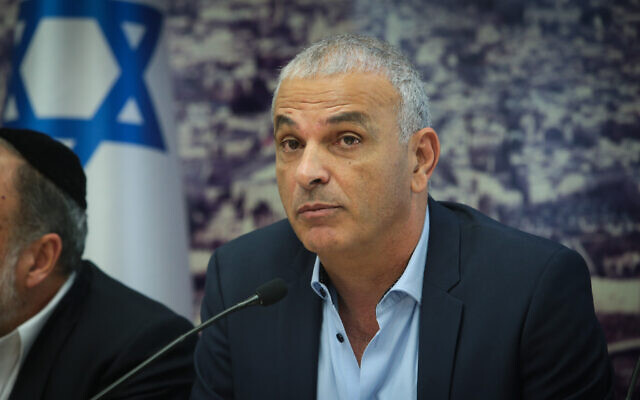
Finance Minister Moshe Kahlon hold a press conference with at the Finance Ministry office in Jerusalem, September 23, 2019. (Flash90)
But in 2017, the High Court of Justice struck down the law imposing the special tax, dealing a blow to Kahlon’s efforts and sending the legislation back to the Knesset’s Finance Committee for revisions and additional plenum votes.
That same year Finance Ministry data showed that over 50,000 Israeli households owned three or more homes — a total of some 180,000 houses and apartments nationwide at the time.
“This was the top 1% of earners and it’s not a huge amount, but there was a big reaction [from those it would have impacted],” Hoffmann-Dishon recalled.
The purchase tax on second homes was reduced to 5% in 2020, in an effort to get investors back into the real estate market amid an economic slowdown brought on by the pandemic, boost the construction sector, and increase tax revenues. Experts correctly predicted that higher housing prices would follow, and the BOI is now looking to increase the purchase tax once again.
Ben-Shahar said that very low interest rates set by the BOI and limits on monthly returns that cannot exceed 30% of disposable income on housing have contributed significantly to the housing crisis. In 2011, interest rates averaged 5%, compared to just over 2% by Q2 2021, his study on housing affordability for Q2 2021 showed.
“The interest rates have had a dramatic impact on the rising prices and since these rates are at an all-time low and there is no room to go lower, prices will continue climbing,” he warned.
“Income distribution is also an issue in Israel and average income did not rise in line with prices,” Ben Shahar said, pointing to the study, which showed that the average monthly salary for an employee increased moderately from NIS 8,500 ($2,642) to NIS 12,500 ($3,886) today.
“People in lower economic situations cannot even dream of becoming homeowners, and even those with higher incomes, those in the 3rd to 7th decile, have a very hard time,” he noted.
In Tel Aviv, the most in-demand and expensive housing market in the country, where the average price for a four-room apartment reached over NIS 4,280,000 million ($1,329,671) in Q2 2021, “we’re approaching a situation where only the top decile will be able to afford down payments.”
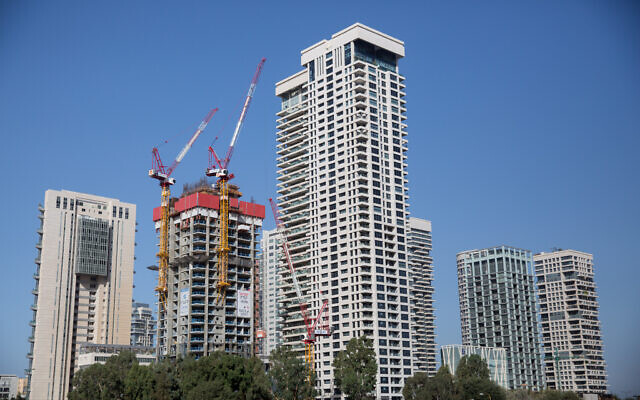
View of Park Tzameret, a luxury complex built in Tel Aviv. November 27, 2019. (Miriam Alster/FLASH90)
Both Ben-Shahar and Hoffmann-Dishon dismissed a widely circulated UK report that claimed that the average property price in Israel had increased by 345.7% sinc e 2010. They each said it’s possible that in some areas, like certain neighborhoods in Tel Aviv or Jerusalem, prices rose by that much but it was certainly not the average.
In Jaffa, for example, rapid gentrification and skyrocketing real estate prices driven by demand for luxury dwellings are turning the port city, part of the Tel Aviv Municipality, into a bastion for Israel’s ultra-wealthy and pricing out Arab residents whose families have lived there for decades.
One of the most important factors driving up prices across Israel in the past decade is restricted supply. Over 90 percent of the land is state-owned and managed by the Israel Land Authority (ILA), and the agency has not released enough land to build the required housing units that would keep up with the rising population.
“By the government’s own calculations, we need to build between 50,000 and 55,000 new units every year to match population growth and we are nowhere near that,” Ben-Shahar said.
To meet actual demand and help steady prices, Israel needs more like 80,000 units annually, according to a 2018 policy paper co-authored by Prof. Zvi Eckstein, dean of the Arison School of Business and Tiomkin School of Economics at Reichman University (formerly the Interdisciplinary Center Herzliya, or IDC)

Prof. Danny Ben-Shahar, faculty member at Tel Aviv University, and director of the Alrov Institute for Real Estate Research at the Coller School of Management. (Micha Loubton/ Tel Aviv University)
Ben-Shahar warned that the situation is only likely to get worse. “The state has a monopoly on the land and the planning institutions; there is so much it can do to slash bureaucracy and generate an environment that would ease the [planning and construction] processes to increase supply.”
“If mortgage rates, or supply, or income don’t increase — and it does not look like that’s where we are headed — nothing will change. You don’t need to be an economist to understand this. The prospects for the coming decade are not good,” he concluded.
‘A substantial rise in prices’
The harsh reality was acknowledged recently by Israel’s Housing and Construction Minister Ze’ev Elkin who declared in June that the country was facing a new era of the housing crisis and would see even steeper prices. “The last Israeli government neglected housing, and that will lead to a substantial rise in prices,” he said.
The comment drew ire from the organizers of the housing protest on Saturday.
“This is an outrage. Is he working for the real estate moguls? The housing minister’s job is to work on housing for people. It’s like if the defense establishment suddenly came out and said: ‘Actually, there’s nothing we can do about Iran [and its nuclear program threat], we have no chance,’” said Ofir, a 37-year-old computer programmer from central Israel who helped organize the demonstration as part of a larger movement founded in 2016 called “The Big Protest – Together we will bring down housing prices.”
“People are upset, tired, frustrated. It’s like we are transparent, our backs are against the wall and no one is listening,” he told The Times of Israel on Saturday ahead of the event.
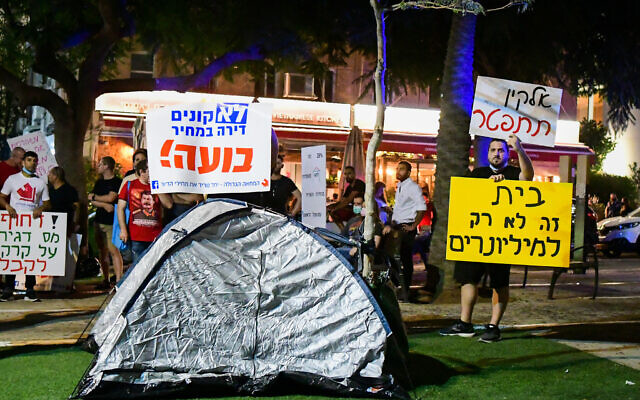
Israelis set up tents on Rothschild Boulevard in Tel Aviv, to protest against the soaring housing prices in Israel and social inequalities, on October 2, 2021. (Avshalom Sassoni/Flash90)
And although it drew maybe a few dozen people, Ofir said the plan was to protest weekly and generate more awareness. In her comments, Leef urged the protesters to continue showing up and encourage their friends to take part.
Ofir, who declined to have his last name revealed for privacy reasons, said that although many arguments could be made for the success and/or failure of the 2011 protests, this new movement would focus only on housing costs.
“In 2011, it was about rent and rising prices, and the cost of living — cottage cheese, groceries — and daycare costs [for kids] and it was too general. This movement is solely about housing,” he explained.
The movement is calling on the government to act on three key issues: to keep investors out of the real estate market, to supply land to build residential units for long-term rentals at a reasonable and supervised price, and to come up with a realistic housing plan for young couples and first-time buyers.
Ofir said it was outrageous that the government has allowed a situation in which young couples and families have to compete with investors for housing.
He also scoffed at Elkin’s new lottery-based housing plan to replace Kahlon’s “Buyer’s Price,” dubbed the “Target Price” program, through which first-time buyers could be eligible to purchase an apartment with a discount of up to 20% off the market price.
“This has to be a joke. It’s absurd. Prices went up over 10% this year alone and the program offers a 20% discount. Let’s say I win the chance to buy an apartment that will be built several years from now when prices will have increased — what is the sense in that?”
He also criticized the program’s focus outside central Israel. “This is the economic center of Israel; there are not many quality jobs in the periphery. Do they just want wealthy people to live in the center?”

Housing Minister Ze’ev Elkin arrives at the President’s Residence in Jerusalem, for a group photo of the president and members of the new government, June 14, 2021. (Yonatan Sindel/Flash90)
“If I were able to buy, I would live anywhere [in the country]. It just doesn’t seem realistic at this rate. I could work and save for years for a 25% down payment but prices keep going up and we would be chasing something that we can’t achieve,” Ofir said, acknowledging that even as a programmer with an income well above average, it would be difficult to come up with a down payment.
And even if his parents and relatives could chip in, a route many Israeli first-time buyers take, “it wouldn’t be enough.”
“My parents have four kids, they would have to give to each of us and it’s their money. It’s money they worked for, I wouldn’t want to take it from them,” Ofir said, adding that such a move contributes to multi-generational inequality.
“The housing issue affects three generations: parents who have to give money to their children to buy a place, these children — us — who struggle to afford housing, and our kids who will suffer because our purchasing power is weakened [and there is less disposable income],” he lamented.
At the protest on Saturday, “lots of people came with their little children, and it really makes you look differently at how this crisis is hurting entire families,” he said.
Ofir firmly believes that it is the role of the government to solve the problem. “Housing is a basic necessity, like water. Meanwhile, the Israel Lands Authority is selling land to the highest bidder, profiting off all of us. The land belongs to all of us. It’s almost a crime,” he said.
Daniel Rosehill, an immigrant to Israel from Ireland who works as a marketing communications consultant and lives in a rented Jerusalem apartment with his wife, also feels pessimistic about ever owning a home in Israel.
“Property values in Israel are insane… and the problem is compounded by the need for relatively hefty down payments,” he told The Times of Israel via email. “The sums of capital required to live in something beyond a dilapidated studio are extremely hard to achieve even when you’re saving every month, which is a challenge in its own right. It’s true that this is a global problem. But the dynamics in Israel are exacerbated. In Israel, even for reasonably high-earning young people, they simply don’t make sense.”
Rosehill said the crisis leads him to weigh his future in Israel. “It’s difficult if not impossible to envision a long-term future in Israel with the prospect of renting indefinitely. In addition to that, Israel’s tenant protection laws are lackluster and the majority of the market is comprised of mom-and-pop landlords. For renters, this picture isn’t sustainable.”
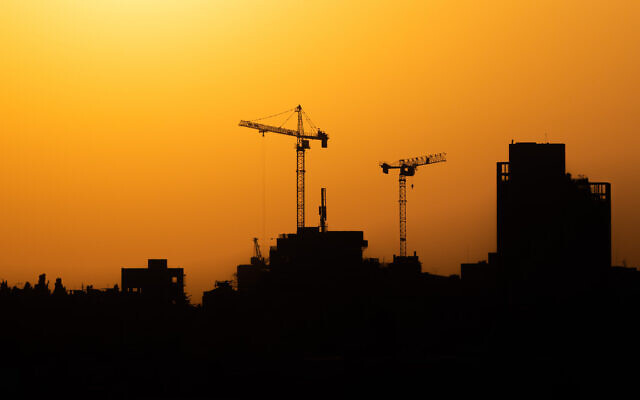
A construction site in Jerusalem against the backdrop of a sunset, September 1, 2021. (Nati Shohat/Flash90)
Ahuvah Berger Burcat, an American immigrant to Israel who also works in marketing and provides some financial coaching services, told The Times of Israel she and her husband were able to buy a four-room apartment in Kfar Saba two years ago after seven years of careful budgeting and saving. And they too needed a boost from her husband’s parents for the down payment.
Burcat said she undertook meticulous research of the housing market to buy the “starter” apartment and budgeted all the extra costs — moving expenses, lawyers, fees, etc. — as well as an extra fund for fixing it up before the actual move.
“Finances require emotional energy. People need to know what they can afford each month without being stretched, and they have to ask themselves why it’s a priority for them to own. They will need to actually pay off the mortgage,” she said.
Mortgage-taking at a record high
Despite the hardships, the value of mortgages taken by Israelis this past August hit a record high of NIS 11.9 billion ($3.7 billion). Since the beginning of 2021, the value of mortgages hit NIS 75.1 billion ($23 billion).
Hoffmann-Dishon of the Adva Center explained the dissonance by saying that “families are either taking out huge loans and financial risks, over-extending themselves, or they are compromising on small apartments in areas they don’t want to live in, further away from the center, where they also face infrastructure issues and a transportation crisis.”

A crane is used in new construction, in the Jaffa neighborhood of Tel Aviv, Israel, April 21, 2021. Historic Jaffa’s rapid gentrification in recent years is coming at the expense of its mostly Arab lower class. With housing prices out of reach, discontent over the city’s rapid transformation into a bastion for Israel’s ultra-wealthy is reaching a boiling point. (AP/Sebastian Scheiner)
“Often, these homes are not suited to their needs and fewer middle-class families nowadays live in homes they own,” even as Israel’s home-ownership rate remains on the high end of over 66%.
But these high home-ownership rates are not necessa rily economically viable. It’s more about having few solutions, he pointed out. People are buying homes even when they can’t really afford them or in areas they don’t want to live because there is no real, quality public housing solution in Israel, nor has the government invested any effort in creating alternatives like low-profit social housing, Hoffmann-Dishon said.
In Israel, just 2% of households live in public housing. In Western Europe, where poverty rates are lower, by contrast, social housing serves between 18% and 35% of the population. The Adva Center proposed in 2017 to create an inventory of about 450,000 public housing apartments over 10 years, which will make up half of the rental market and 15–20% of all housing units at any given time.
In Vienna, for example, 50 percent of people live in public or subsidized units owned by municipalities or housing associations that build and rent out apartments at below-market rates, he said.
The real problem, Hoffmann-Dishon said, “is that not everyone wants the prices to go down. A lot of people are making a lot of money — the banks, the developers, the real estate agents, the government. Especially the banks, it’s a very important source of revenue for them. People who buy homes as investments also have no interest in lower housing prices. The upper echelons of Israeli society have a deep effect on housing policy.”
“The solutions are known and they exist all over the world. This [housing crisis] is a man-made situation, it’s not a natural disaster. The government can choose to make housing more affordable and accessible,” Hoffmann-Dishon concluded.
Note: This article have been indexed to our site. We do not claim legitimacy, ownership or copyright of any of the content above. To see the article at original source Click Here





